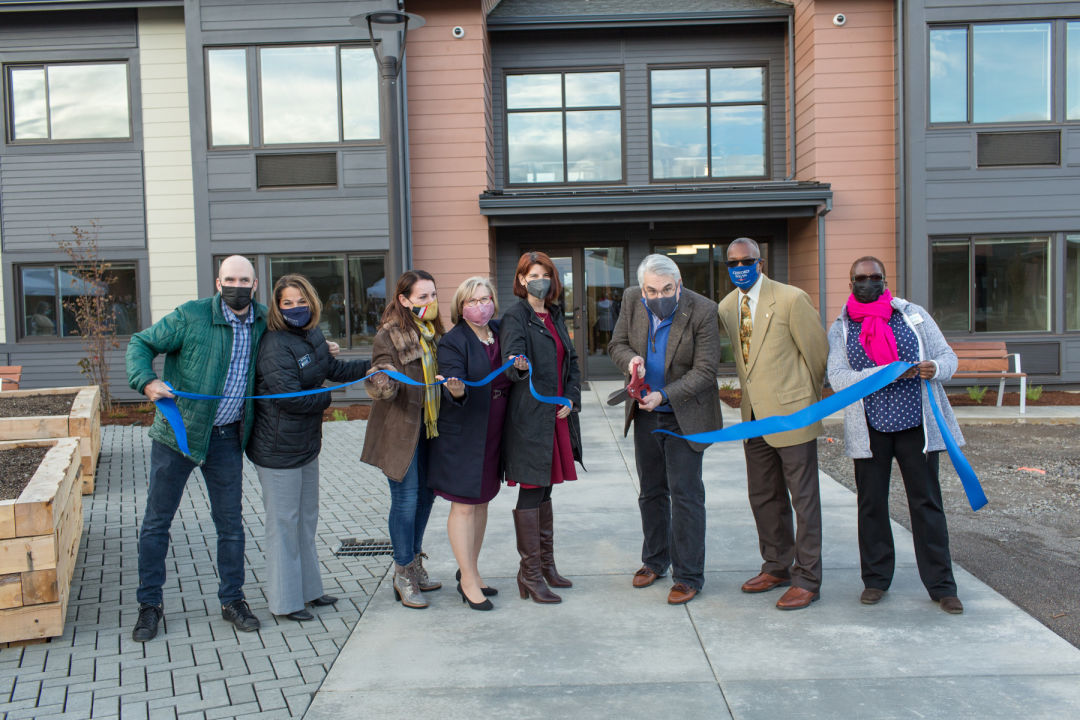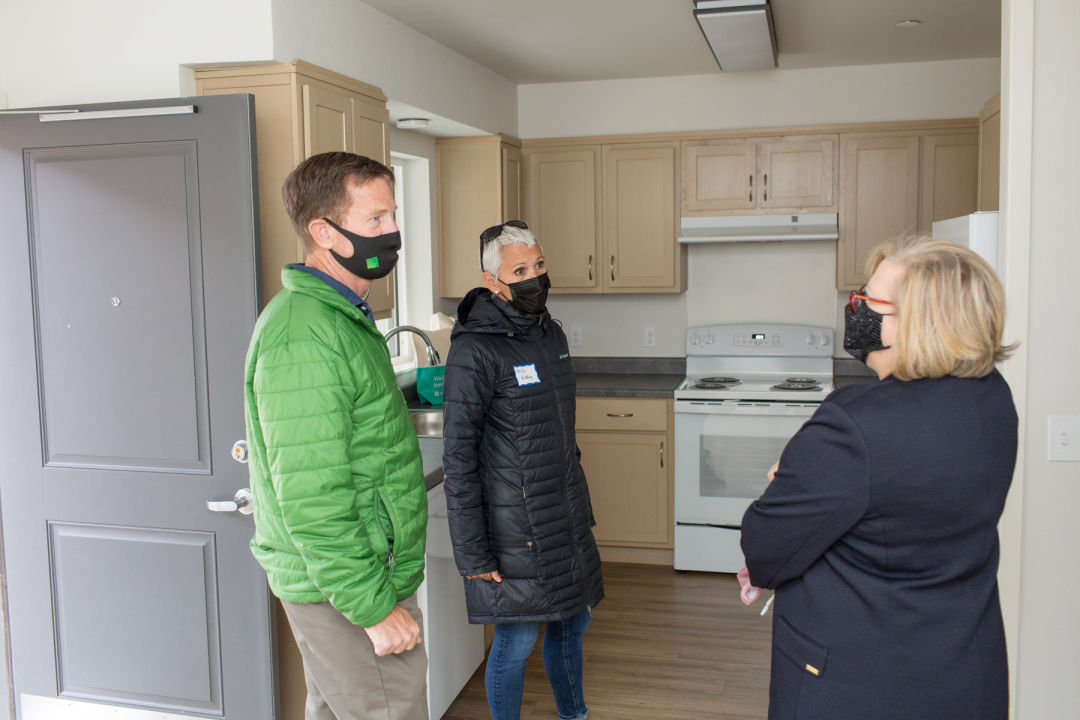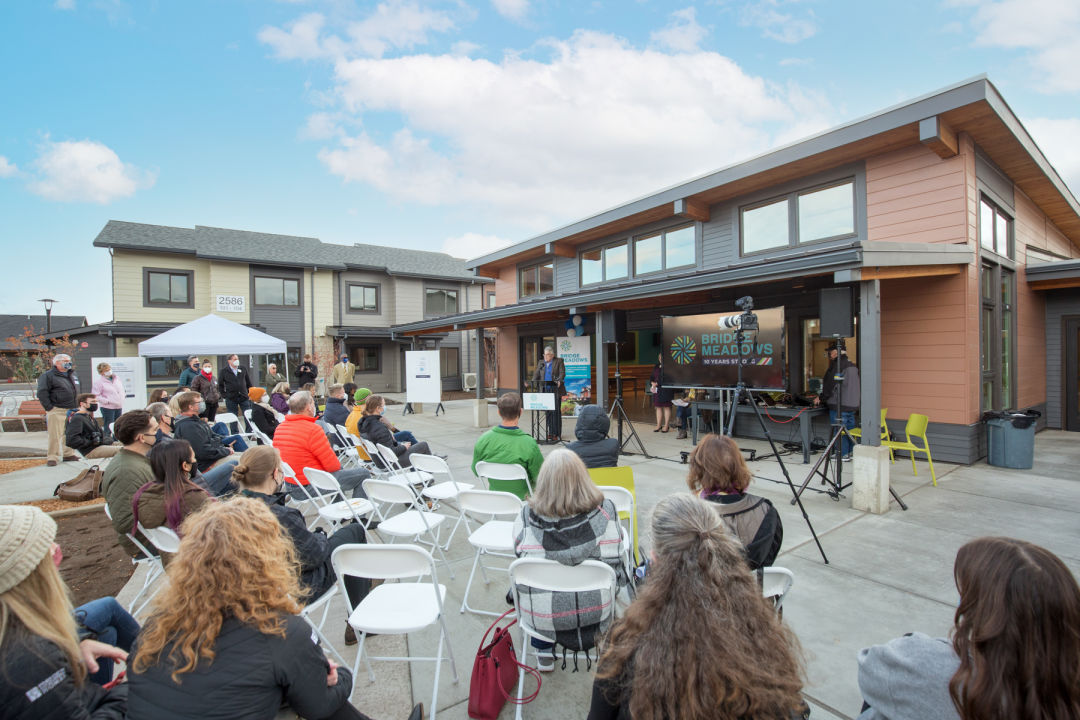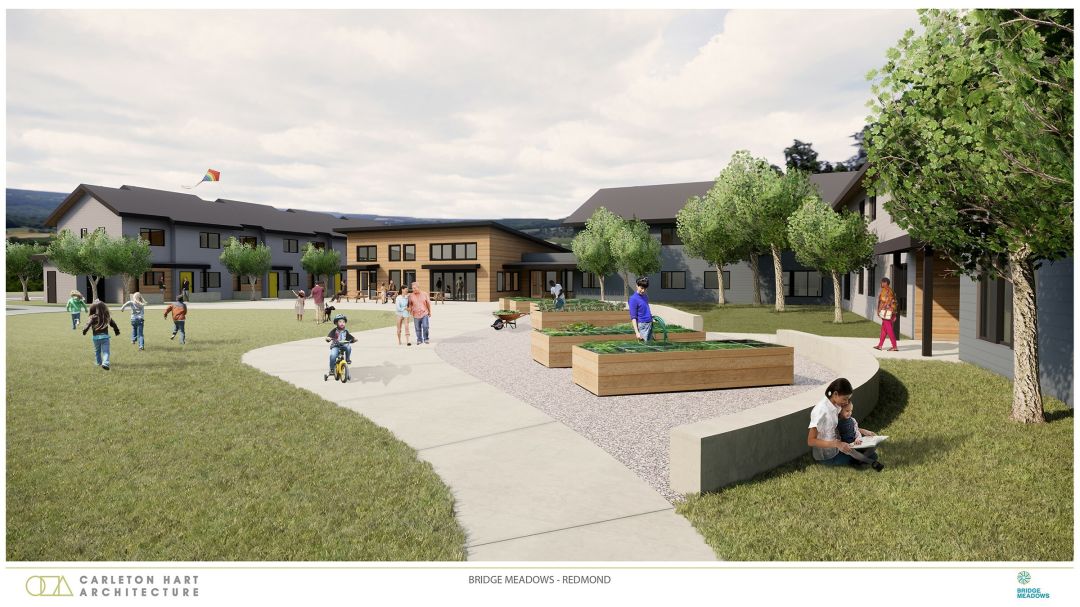Purpose and Belonging in Mixed-Age Communities

Stakeholders celebrate the opening of the newest Bridge Meadows intergenerational community in Redmond, Oregon.
Image: Courtesy Walsh Construction
In the modern world, the opportunities for young and older people to form meaningful relationships are much less common than in the past. As our elders flock to seniors-only communities (or avail themselves of assisted living), young adults gravitate to cities. It’s a Venn diagram with consistently less overlap—a picture of the shifting dynamics in our country, where age is just one of many dividing factors.
But in Oregon, one organization is doing its part to bring people closer together, in the hope of cultivating the societal benefits that blossom when elder wisdom and youthful exuberance are shared freely.
“Bridge Meadows develops and sustains intentional, intergenerational communities for youth formerly in foster care, adoptive families, and elders, where neighbors support neighbors, all belong, and live safe, abundant lives,” explains Executive Director Derenda Schubert. “Our affordable housing communities are built according to specialized design principles that address psychological and physical safety for children, aging-in-place, and connection. Community Support Specialists serve on-site as caseworkers and facilitators, providing mental health services, therapeutic programming, and community guidance.”

Touring a town home at Bridge Meadows Redmond, a community that supports psychological and physical safety for children, aging-in-place, and connection.
Image: Courtesy Walsh Construction
Since the very beginning, even before Bridge Meadows’ first community opened in Portland (April 2011), two local companies, Walsh Construction Co. and Carleton Hart Architecture, have collaborated to implement this innovative model.
“I personally cannot pretend to imagine what it would be like not to have a place to call home and am committed to helping find solutions that will assist in fulfilling this need in our communities,” says WALSH’s CFO John Wied. “What was a concept that had major headwinds in the beginning is now being celebrated nationally for bringing innovative solutions to healthy living for families and seniors. We look forward to remaining partners in promoting and developing these communities across the country.”
Bob Walsh, chairman of the board, adds, “Walsh Construction Co. has been building affordable housing for 60-plus years. Hopefully, our efforts have improved the lives of people we serve and improved our community. Our relationship with Bridge Meadows is a shining example of our mantra—partner with owners we trust and respect! We believe this relationship is mutually beneficial, and we hope there will be more Bridge Meadows communities to come.”

The opening of the Redmond community comes as Bridge Meadows enjoys its 10th anniversary of creating uniquely supportive communities.
Image: Courtesy Walsh Construction
Now, as Bridge Meadows observes its 10th anniversary, there’s another milestone to celebrate—the debut of Bridge Meadows Redmond, a beautiful development of townhomes complete with garden boxes, mountain views, and a communal meeting place. In recent years, rapid growth in Central Oregon has created an urgent need for housing there, especially among middle-to-moderate and low-income elders, many of whom are raising grandchildren.
The new Redmond location looks to build on past successes. Jim, a former elder resident, described his experience of living at Bridge Meadows. “We flourished and evolved there,” he said. “If you go to live in an apartment complex with a bunch of older people, for instance, people kind of wither away, and it’s not right. Connections across the generations are critical, absolutely critical for aging well.”
Another resident (and parent), Laura, echoed the positive impact: “For me, Bridge Meadows is about thriving, not just surviving. We have these beautiful, gorgeous homes that have plenty of space for my kids, and then they get to go beyond that by using all the services—the art, the therapy, the dance. They bring that enrichment to us, which makes it so much easier to access.”

This rendering of Bridge Meadows Redmond's finished community room and outdoor gathering space shows how the project design fosters connection and interaction.
Image: Courtesy Walsh Construction
Each community has specific needs that influence minor design modifications, but every Bridge Meadows is built based on trauma-informed design principles that aim to improve safety and quality of life for families raising kids formerly in foster care. “The sense of permanence is so important because for these kids, their trauma involved a loss of security and loss of their home. Programmatically, we’re working to create a forever family, while architecturally we’re creating the forever home,” says Carleton Hart Architecture cofounder Brian Carleton. “This is done through quality of design, using traditional, recognizable home-like forms, creating space for families to thrive. Buildings are also organized around a central courtyard to continue that theme of connection.”
Though the process can be slow, Schubert feels that Bridge Meadows is just getting started, and she envisions future locations in Clackamas County, Eugene, Corvallis, Tacoma, and elsewhere across the country. It’s a long-term investment not only in the well-being of residents, but on a societal level, too.
“One of our young people discovered he had a talent for teaching tech-related things to elders. Another elder who used to teach physical education helps a teenager with her gymnastics and dance routines,” says Schubert. “It’s about plugging into this affinity and building connections that evolve around that common interest. These bonds then serve everyone when a crisis like a pandemic hits. People feel comfortable asking for and receiving help because of those relationships. I think as a society, we’re only going to need more of this kind of interdependence.”
---
Bridge Meadows
bridgemeadows.org
